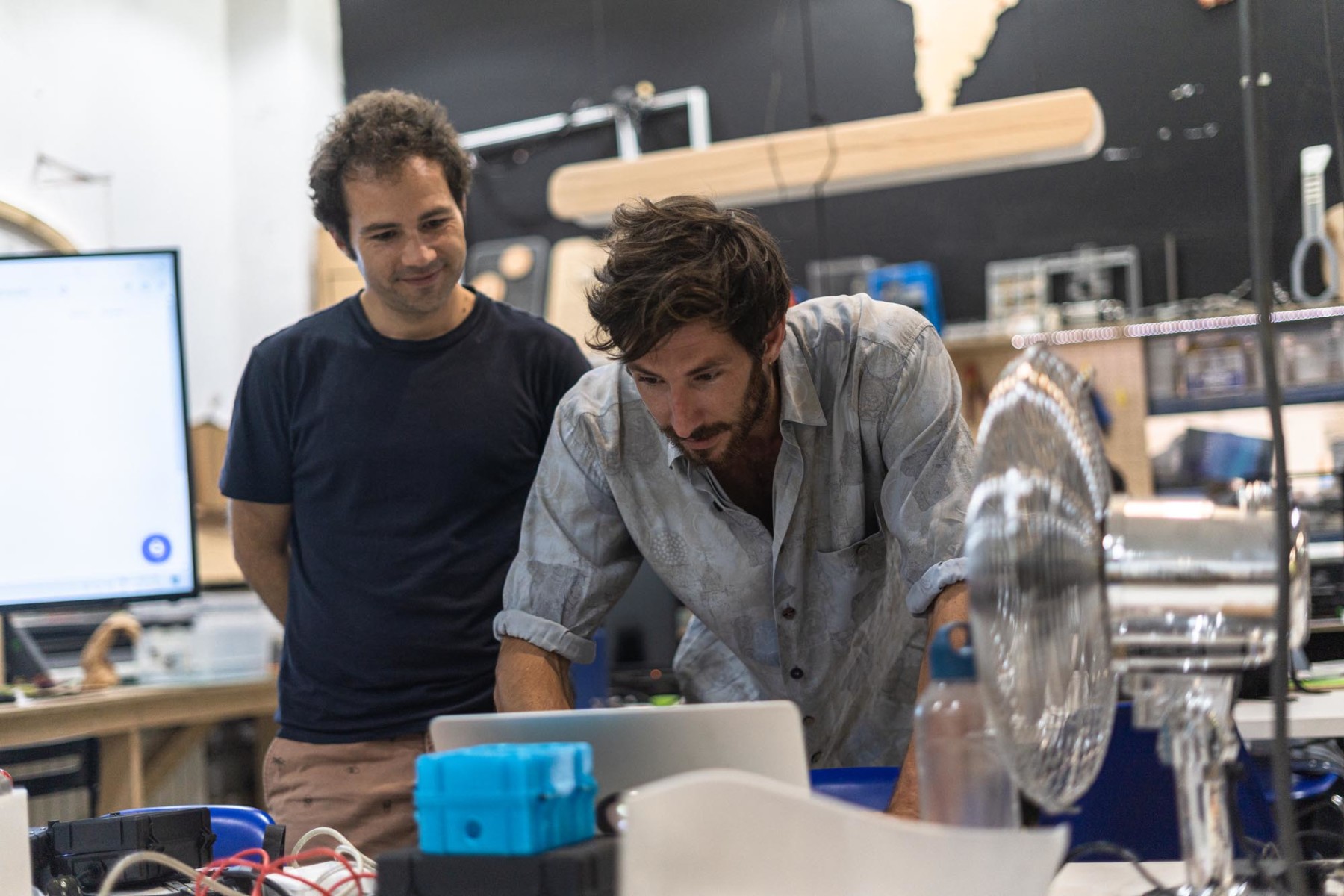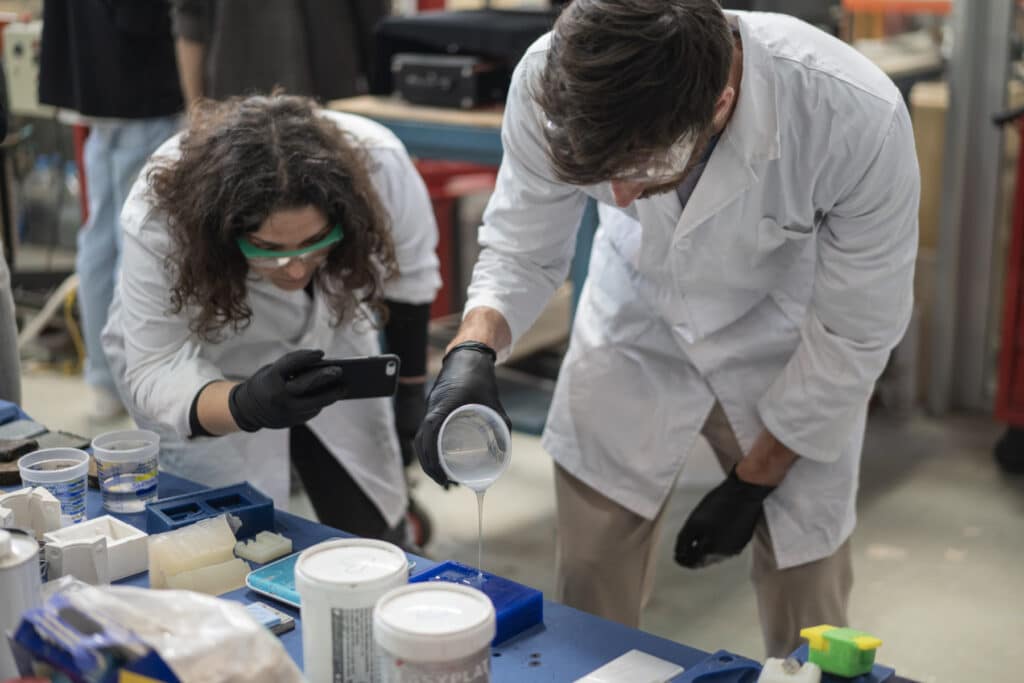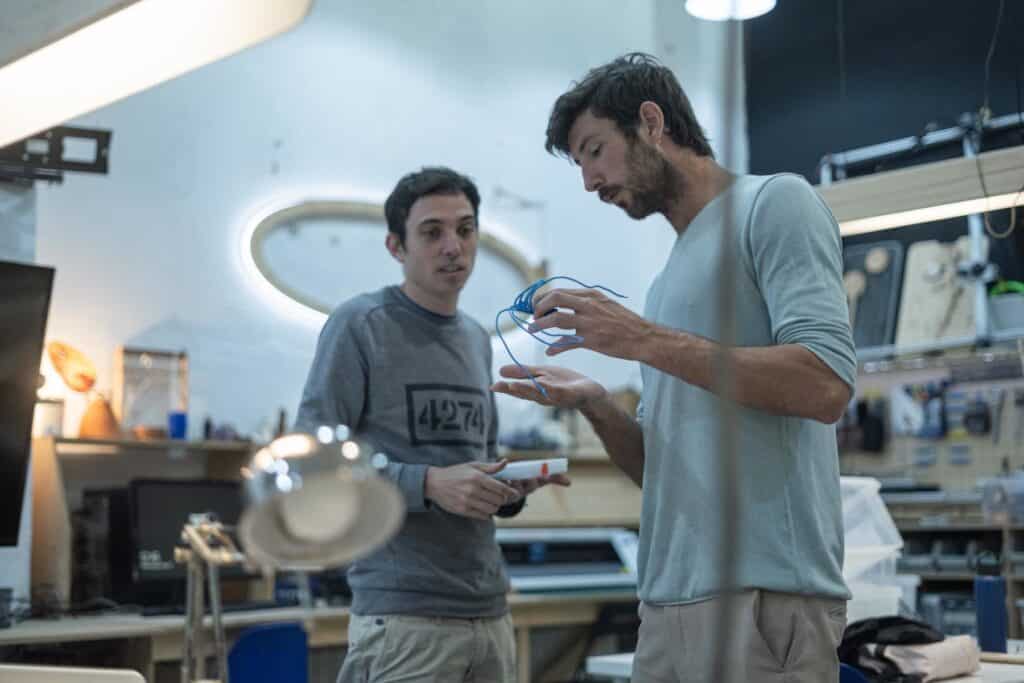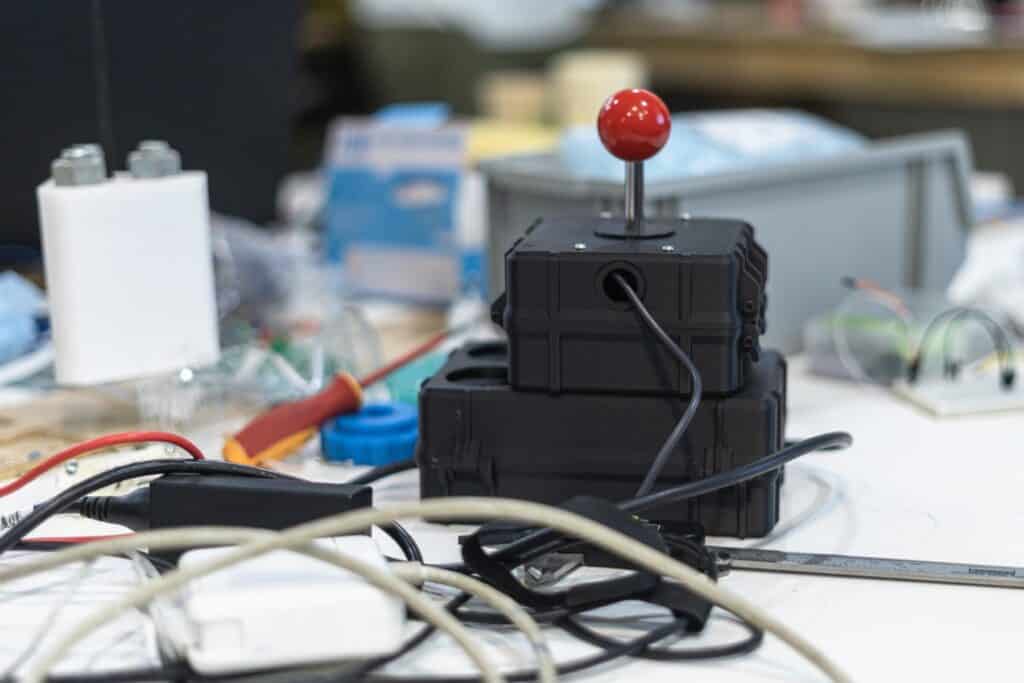
Controlling real-life objects with a joystick
Rather than playing a game on a screen, an interactive Fab Academy project allows users to engage with everyday objects
Introducing Aurel Richard, a Barcelona-based graphic designer, creative technologist and maker. In the following interview, he shares his Fab Academy journey, talks about his interest in electronics and shares details about his final project – a modular network taking the form of a joystick that allows the user to interact and have fun with everyday objects.
1. Tell us a bit about yourself. What did you do before you started Fab Academy?
I studied graphic design in London, in Central Saint Martins. Since then, I’ve been doing so many different things mostly related to design and technology. The thing that brought me back into studying and into Fab Academy was essentially the need to fill up the missing knowledge I had in terms of digital fabrication and electronics.
2. How did you find out about Fab Academy?
I already knew about it when I moved here. From friends but also because I was teaching at IAAC. However it came back up post quarantine as I wanted to do something different. I wouldn’t say reinvent myself, but dig into this part that I feel like was really missing and I wanted to learn about. It was something I always had in the back of my head that I was very curious about, knew too little and wanted to do a lot.
3. Why did you choose to do the program?
I think the keyword that got me was rapid prototyping. That’s the thing that I felt like was what I genuinely enjoyed doing with my life. Making stuff quickly, creatively, not going super in depth into things. I’m not an expert at anything I would say, but I enjoy learning and being good at many things. So rapid prototyping really caught my eye. It just kind of stood out to me.
Another thing is I started looking into the course’s previous years and the classes that were there. All of this is documented as part of Fab Academy. It really made me feel overwhelmed by how little I knew about all this but it also excited me to do the course and learn about it.
“Fab Academy was something I always had in the back of my head that I was very curious about, knew too little and wanted to do a lot.”
4. When did you decide it was the right time to apply?
I made the decision over Christmas break. I had been working on something that wasn’t really satisfying me. I felt like I’ve been missing creativity and the things that drive me a lot. I felt like I haven’t been learning interesting things in a while. I was stuck in that zone. So at the end of year I decided I’m doing this.
5. What is it like being back to school for six months?
Amazing! It’s awesome. At the beginning it was peculiar because after 7-8 years of not studying, I was getting back into doing something just for myself without anyone requiring me to do things for them. I think that’s what I missed, doing things to make myself happy. I already valued this when I was in university, but with work I tend to forget a little bit because the truth is you try to find your happiness within the work you do, but usually you are working for someone or something and this is just for me, this is my little thing. It’s my pleasure. It’s whatever I want to do, whatever I want to learn. It’s a lovely selfishness to have.
6. Which one out of all the Fab Academy classes was your favorite?
Always the next one because you’re always learning something new. The way Fab Academy works is very interesting. It feels like it’s not a separate process, it’s a continuing one. Each week you’re learning something new, but with the baggage of the knowledge of the previous class.
For example, one class was about designing something in a 3D software so I went for Fusion 360 which is one that I had never tried out before and two weeks later I used my knowledge from there to design something that I actually built. Without that first class, you don’t get to go to the next one. So really when I say the next one is always the most interesting one is because of what it’s going to bring you.
7. Did something go wrong during the six months?
Wrong is not the word but there was a turning point. Having high expectations of myself and the time I was able to dedicate to Fab Academy versus the time I was actually able to hit. Basically I was asking too much of myself and putting too much pressure on trying to deliver everything when, like I said before, this was obviously about me. So I just brought down those expectations and was able to enjoy Fab Academy a lot more.
8. When did you realize you got an idea for your final project?
Easter break. That was another turning point. Basically after the machine week we did all together. It’s quite interesting because I feel like that week we all clicked into final project mode. After that week, we all somehow simultaneously decided to be like, I’m gonna do this and I’m gonna do that and things formed by themselves. It’s hard to describe how or why. You could feel that things were clicking after four months. Before that, it was more learning, learning, learning. And then it was, what am I going to do with this learning? I think the break was fundamental because we had that headspace to be able to reflect on things, breathe and dive back in with more of a precise idea. At that point we all had our final project idea.
9. Did the other Fab Academy students help you in prototyping your idea?
We always help each other just by being around even if it’s just bouncing little ideas off each other.
“I think the whole point of Fab Lab in the first place is to allow people to learn how to use fabrication, and then teach other people how to do the same, so that we can grow more as a society and be able to have a better understanding of how things work.”
10. Could you describe your final project?
My final project is called Happy Stick. It’s a modular system that allows a user to remotely control things with a joystick. The whole idea behind it is to use a piece of arcade game to be able to control and play with everyday objects and things in the real world that normally would not be used as a playful interface.
The project consists of a joystick that sends information wirelessly to a platform called Node Red, that receives the information and allows me to send it as different information to other modules. For example, like a switch and when I turn the joystick on, it turns the switch on. This wireless feed then gets sent into another board connected to the switch and to relays which let electricity pass or not pass.
I’m trying to now come up with ideas and create playful games with everyday objects. Lights and fans and things that turn on and off and things that move and activate those with this one joystick. Basically try to create a bit of a story or surprising experience for a user. Ultimately, it’s really an art or an interactive installation to engage a user with everyday objects and be suddenly surprised with this one joystick and the outcome it has on the real world, rather than playing a game on a screen.
11. What techniques did you use to create your final project?
It started with electronics. That is the main focus of my final project because it’s really what I wanted to learn and develop. I wanted to get my hands deep into that and try to figure out how it works. The other techniques were more wrapped around that.
I used 3D printing to create the box. I also used a new digital software that I’d never heard about, Node Red, which allows you to do wireless communication between different boards. I was using a bit of laser cutting, molding and casting as well. It’s funny because it’s hard to label them as technologies. It’s more like I used what I had to. It’s part of the process so much that I feel like it’s not a distinct technology that I used. In a way I used the entire experience of what I’ve learned.
12. How do you imagine your project developing after Fab Academy?
I imagine that Fab Academy is phase one of this project which is learning the tools to be able to create the first piece of the puzzle. I really have the ambition to keep building modules, learning more from it and allowing it to grow to actually do more things with it. Ideally, I would like to exhibit it in some places once I have more of a finished product.
13. How do you see yourself after you graduate?
I feel like I’ve opened a new door. I don’t feel like I’m gonna suddenly start doing something completely different. However, I do hope that I can keep learning and using those skills, and also give back to the ones that are learning. I think that’s the most important thing here, to share that knowledge. I think that’s the whole point of Fab Lab in the first place. It’s really to allow people to learn how to use these tools and fabrication, and then teach other people how to do the same so that we can grow more as a society and be able to have a better understanding of how things work. That’s very exciting and I see myself as being part of that now.
14. Do you feel that you’re now part of a network with the other Fab Academy students?
In a local sense I feel like that’s great and I really hope this allows me to continue learning from Fab Academy and ideally contributing back as well. I think it’s a cycle. What Fab Academy does is teach us so we can then teach other people. That’s what I strongly believe in. It’s not about going away and keeping this for ourselves but rather giving it back to other people that are interested in this.
15. Who would you recommend Fab Academy to?
I’ve had this discussion already with a bunch of people to whom I’ve already recommended it to. I don’t think they fit into a specific category but I don’t want to say everyone because I don’t think it is for everyone. I think it’s for the ones who want to make things, learn something new and be challenged. You can come to Fab Academy with the idea of making something specific or just the will to make something and both fit perfectly within the course. Ultimately, what matters is to be open to wanting to learn something, and something practical as well. We do a lot of courses of abstract things, and that’s amazing, but Fab Academy is also very practical. It’s really about making stuff.
Curious to know more about Fab Academy?
Find all the details here




